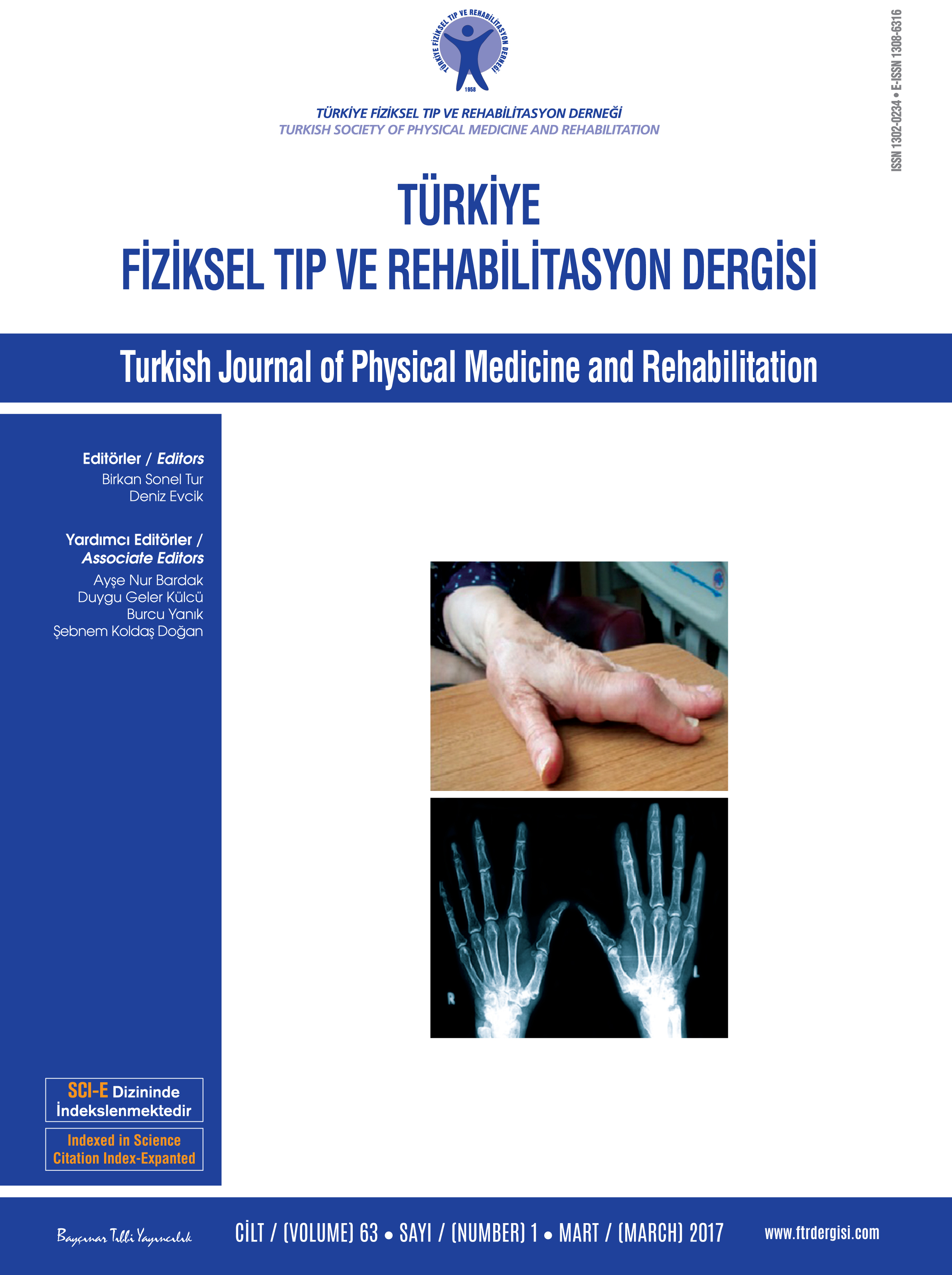Spasticity in patients with traumatic spinal cord injury: from the patients’ and physicians’ perspective
Patients and methods: Between January 2006 and December 2010, a total of 119 TSCI patients (91 males, 28 females; mean age 34.9±13.1 years; range 18 to 79 years) were included in the study. The patients were asked for localization of the spasticity, its beneficial and harmful effects and whether it caused pain. The patients with pain were evaluated using the Visual Analog Scale (VAS). The physicians used the Modified Ashworth Scale (MAS) for all patients. The spasticity was also evaluated using the Penn Spasm Frequency Scale, Spasm Severity Scale, Hygiene Scale, Deep Tendon Reflexes Scale, Clonus Score, and the Plantar Stimulation Response Scale. The patients were functionally evaluated with the Barthel Index (BI) and the Functional Independence Measurement (FIM).
Results: Spasticity was reported by 42 patients (35.3%). Based on the MAS evaluation of the physicians, 54 patients (45.4%) had spasticity. The FIM, BI, and VAS scores of patients with spasticity were statistically significantly worse than those without spasticity. There was a statistically significant correlation between the spasticity evaluation performed by the physicians and patients (r=0.772; p=0.001). We also found a significant correlation between the MASS and VAS scores (r=0.200; p=0.029) and between the patient-reported spasticity and VAS scores (r=0.345; p=0.001).
Conclusion: Our study results suggest that different measurement tools should be used during clinical examination to accurately evaluate the incidence and severity of spasticity in TSCI patients.
Keywords : Assessment, measurement, spasticity, spinal cord injury

















